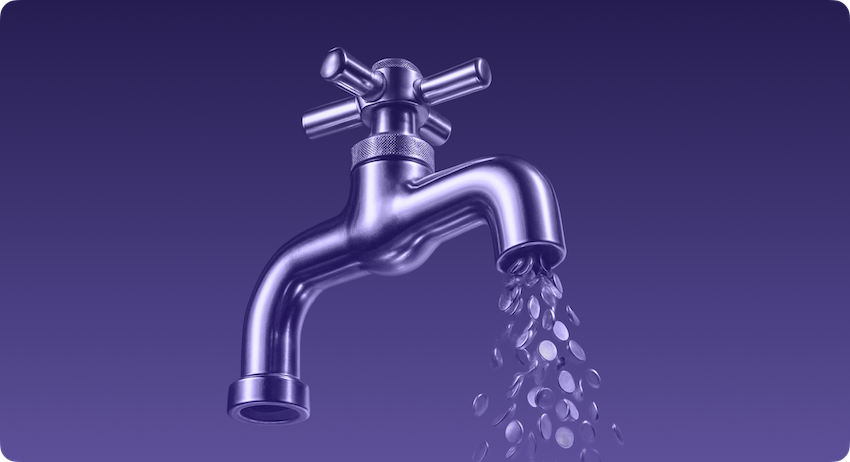Most startup CEOs and founders think they have a handle on cash. But all it takes is one surprise:
A delayed invoice, an unexpected tax payment, or a dip in revenue and suddenly you’re staring at a shorter runway than expected.
Cash flow issues don’t usually come from not having revenue. They come from not knowing when the money is coming in or going out.
That’s where cash flow visibility comes in.
It’s not about budgeting or accounting after the fact. It’s about knowing, today, how much cash you really have to work with, and how long it will last.
What you'll learn in this article
- What cash flow visibility actually means (and why your bank balance isn’t enough)
- How to build it with the right inputs, tools, and habits
- What startups gain from better visibility
TL;DR
- Most startups don’t fail from lack of revenue. They fail from running out of cash without seeing it coming.
- Cash flow visibility means knowing when money comes in, when it goes out, and how long your runway really lasts.
- You don’t need a PhD in accounting. You need reliable data, simple tools, and a system that doesn’t fall apart on Friday afternoon.
Better understand your financial performance
With re:cap, you get an overview of you cash position and get peace of mind knowing what you can spend.
Create your account and start testing itWhat is cash flow visibility?
Cash flow visibility is your ability to track how much cash you have, where it’s going, and how long it’ll last – with enough warning to actually do something about it.
Most teams think they have this already. They don’t. They have a bank balance and a budgeting spreadsheet last touched three board meetings ago.
Here’s what real visibility includes:
- Live data from your bank, invoices, and accounting
- A forward-looking view, not just what happened last month
- The ability to spot gaps, delays, or unexpected costs before they bite
Think of it like driving at night. Your bank balance is your speedometer. Visibility is your headlights.
Why startups need cash flow visibility more than anyone
Larger companies have buffers: finance teams, CFOs, credit lines. Startups? You’ve got Slack, Notion, and a dream.
Here’s why that’s dangerous:
1. Your revenue is volatile
Annual contracts don’t pay monthly unless you force them to. Customers forget to pay. Churn happens. You can’t afford to be surprised. It can be an immediate threat to your company.
According to 2024 data from the US Bureau of Labor Statistics, one of the main reasons why businesses fail is because they run out of cash due to bad forecasting (29%).
2. Your burn rate is unforgiving
You’re investing ahead of revenue. Every unexpected expense shortens your runway. Every late payment puts pressure on your bank account.
3. Your funding windows are narrow
Fundraising is a timing game. You don’t want to fundraise when cash is at zero.
You want to time it when your metrics look strong. That requires knowing when the crunch is coming, months in advance.
4. Your decisions are capital-bound
Hiring, marketing, expansion: every big move depends on knowing how much cash you actually have.
What cash flow visibility actually looks like
There’s no single tool that solves this. Visibility is a system. It is built on inputs, infrastructure, and habits.
Let’s break that down.
1. Inputs: The data you need
If it moves money, it belongs in your visibility stack:
- Bank transactions
- Outstanding invoices (receivables)
- Vendor bills (payables)
- Payroll and contractors
- Tax obligations
- Debt repayments
- Equity or funding inflows
This is the minimum viable dataset. Miss one, and your forecast is fiction.
2. Infrastructure: How you track it
Most startups start with spreadsheets. Some stay there too long.
Here’s the tradeoff:
If your team’s asking, "Can we afford this?" and the answer takes 2+ hours to find, then your tool stack is broken.
3. Habits: How you stay on track
Cash flow visibility dies in the gap between knowing and doing. Even the best setup fails if you don’t look at it often enough.
Set a rhythm:
- Weekly cash reviews (short-term focus)
- Monthly forecast updates (long-term trajectory)
- Plan vs. actuals tracking (catch surprises)
- Scenario planning (what if growth stalls? What if funding delays?)
If it takes a board meeting to force this review, you’re already too late.
What you gain when visibility clicks
Visibility doesn’t just prevent disaster. It unlocks better strategy.
How to build cash flow visibility (without hiring a controller)
How re:cap helps you get full cash flow visibility
If you're using outdated data and guesswork to understand cash flow, you're working blindfolded.
re:cap’s Capital OS gives you:
- Real-time syncing with bank accounts, accounting tools, and invoice data
- Dual-mode forecasting (weekly and monthly) tailored to both operational and strategic needs
- Scenario modeling so you can prepare for best- and worst-case outcomes
- Plan vs. actuals tracking to course-correct in real time
- Capital planning insights to align your cash runway with growth goals
It’s not just about seeing your cash. It’s about knowing what to do next and when.
Visibility turns chaos into confidence
Cash flow visibility isn’t just for your finance team. It’s for the whole company. When everyone understands the financial picture, better decisions follow.
For startups, it means:
- Extending runway
- Timing funding wisely
- Building trust with investors
- Staying calm in the face of volatility
And it doesn’t take months to set up. With the right tools, you can build visibility in days, and start making smarter decisions right away.
Summary: Cash flow visibility
- Cash flow visibility means knowing not just how much cash you have, but how long it will last, and what will change it.
- Startups need it to navigate high burn, volatile revenue, and tight fundraising windows.
- You gain visibility by combining the right data, tools, and habits.
- The payoff: longer runway, better decisions, and a real edge in investor conversations.
Q&A: Cash flow visibility
What’s the difference between cash flow visibility and cash flow forecasting?
Forecasting looks ahead. Visibility is broader. It covers actuals, trends, forecasts, and timing. Visibility means knowing your position at any time.
Can’t I just use my bank balance to see how much cash I have?
No. Your bank shows cash now. Visibility shows future cash flow — inflows, outflows, and gaps.
When should a startup invest in tools for cash flow visibility?
As soon as burn and headcount rise. If you’re spending >€50K/month or planning a round, you need better visibility.
Better understand your financial performance
With re:cap, you get an overview of you cash position and get peace of mind knowing what you can spend.
Create your account and start testing it

.gif)








